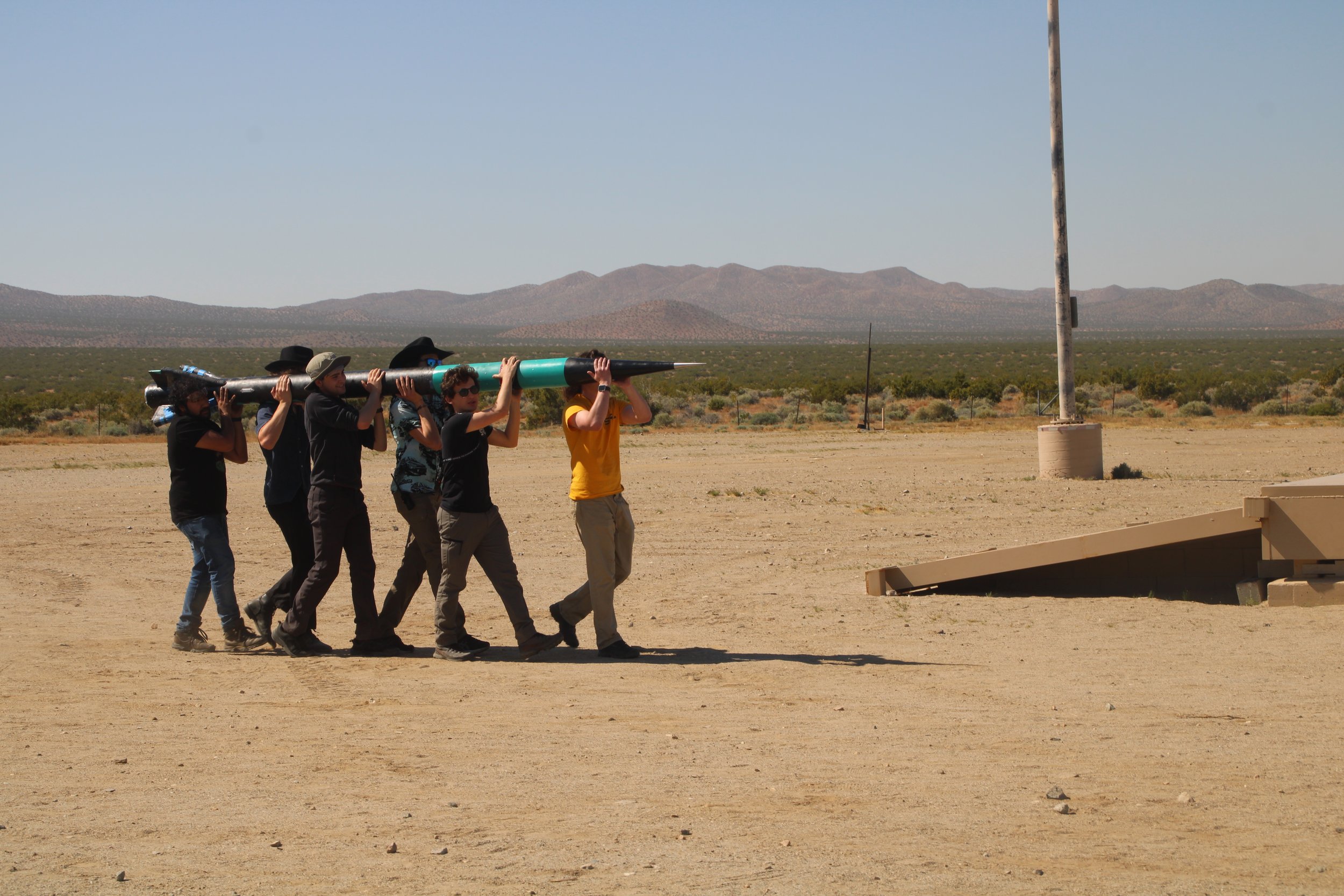
Mamba
SRL is currently working on the third version of the Mamba vehicle. After two unsuccessful launches in the spring of 2024, we are collaborating closely with the Ann & H.J. Smead Department of Aerospace Engineering Sciences to refine and enhance our rocket. Our goal is for the Mamba to serve as a small-scale version of our Spaceshot vehicle.
Through this collaboration, we are focusing on addressing the challenges faced in previous launches, improving the design, and ensuring the reliability, performance, and safety of the Mamba vehicle. Emphasizing safety is paramount as we work to mitigate risks and enhance the robustness of our systems.
Mission Patch
Vehicle Overview
Mission Objectives
100,000ft MSL
Mach 3.5
Vehicle Focuses:
Airframe Thermal Protection Systems
Custom Propellant
Composite Motor Design
Testing infrastructure
Stats
11 feet tall
6” outer diameter
P-class motor
Subassemblies
Stainless Steel Tip
Mamba’s nosecone is capped with a 315 Stainless Steel tip which protects the vehicle from intense aero-thermal heating present at three times the speed of sound.
Structure
Internally, Mamba’s nosecone consists of two fiberglass half-shells that were laid up and bonded together.
Flight Computers
Mamba has three independent flight computers for redundancy. Among them is the YONIX flight computer developed by our avionics team.
Structure
Parachute deployment events apply substantial forces to the avionics bay. Steel threaded rods, aluminum sled mounts, and garolite bulkhead ensure that the avionics bay survives high-G loads during launch and parachute deployment.
Nosecone
Avionics Bay
Motor
Thermal Protection System
The majority of our nosecone is protected from aerodynamic heating with a layer of P-50 cork.
Main Chute Deployment
The flight computers will deploy our main chute at an altitude of 1300 ft AGL through the use of black powder pyrotechnic charges.
Drogue Chute Deployment
The drogue chute is deployed at apogee also through the use of black powder pyrotechnic charges.
Aluminum leading edge
3-way composite layup
Characteristics:
Phenolic LE nozzle
Carbon composite casing
Custom propellant in kevlar liners
Aluminum forward closure
Fins
Mamba I & II
Mamba I was launched on February 3rd, 2024, at the Friends of Amateur Rocketry field in the Mojave Desert, California. Approximately three seconds after motor ignition, the nosecone split along a layup seam due to aerodynamic drag at Mach 3, causing the rocket to spiral off course. Despite this setback, the rocket was recovered with the majority of the structures intact and the electronics still operational.
Aside from structural failure, the motor behaved nominally and confirmed its design and performance. From this experience, the team identified the root cause and redesigned the nose cone layup to eliminate the failure mode.
Mamba II attempted to launch on April 21st, 2024, at the Friends of Amateur Rocketry site in California. Moments after ignition, the motor over-pressurized, resulting in a catastrophic failure (CATO) of the vehicle.
SRL has identified the root cause to be deficient quality propellant which clogged the nozzle throat. In the time since then, the team has worked hard to develop procedures to precisely quantify satisfactory propellant. In addition, SRL is working closely with the Ann & H.J. Smead Department of Aerospace Engineering Sciences to develop stringent safety protocols and reliability checks for all of our subsystems.








